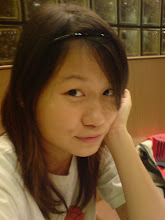When you say the words "media relations" you already have a slight definition that forms in your head. Media is basically the things surrounding us that provides us with up-to-date information and entertainment. Such things include, television, advertisements, radio, magazines, newspapers, billboards and the list goes on. Then the word relations is part of the word relationship and we all know that forming a relationship is bonding with another person. Thus, media relations can be concluded as forming a relationship with the media or the people who make media possible.
According to Bloomberg's Business Week, media relations is a component of public relations. Like what i guessed above, media relations turned out just to be that- to build relationships with the people of the media. However, Bloomberg's Business Weeks also describes how media relations is important because the people of the media are often those who delivers messages and information in a particular form of way. Thus, building good relations with the media is often a good idea.
Now there are various forms of tactics that can be used to give out information.
The first is written. In a written tactic, there are two sub forms which include uncontrolled and controlled. Uncontrolled involves news releases, news releases, backgrounders, feature stories and letters to the editors. In uncontrolled tactics, messages can basically cannot be controlled because they are under the hands of the journalists. Now these journalists can anyhow write a news article depending on the angle that will spice things up! Now the catch is the angle that will "spice things up" can be good or bad. Nobody knows how the journalists thinks and will find interesting. On the other hand, controlled method includes pamphlets, brochures, handbooks, annual reports, books, newsletters and fliers. Now these ones can be controlled and made into a way that the company wants them to be made in.
The second form of tactic is spoken and this includes speeches, interviews, word of mouth, face to face, radio and community service announcements. It is using ones voice to tell information about a specific news.
Besides the tactics, i also learned that it is important that PR practitioners use their creativity and intelligence to find different angles of a story. They need this to explore the various choice of interesting turns they can place as news that may be selected. This is not an easy job as it requires a lot of research and work.
REFERENCE
BusinessWeek. What are media relations and why are they so important? [Online] Available at: http://bx.businessweek.com/public-relations-and-communication/view?url=http://publicrelationsblogger.com/2009/10/what-are-media-relations-and-why-are.html [Accessed 27 January 2010].
The third tactic that can be used is acted tactics. This is when actual interviews, conferences, photo shoots, television announcements, demonstrations, factory tours, exhibitions, street theaters and event launches are made.
The last is imagined tactic. Imagined tactic can be done through putting a product in a show. Thus, the celebrities in the film will use the product in a way to exhibit it to the audience. Thus, exposing the product to the viewers. Another way is by creating photos, pictures, art, graffiti and paintings to spread a news. Others include, videos, DVDs, CDs and musical concerts.
Besides the tactics, i also learned that it is important that PR practitioners use their creativity and intelligence to find different angles of a story. They need this to explore the various choice of interesting turns they can place as news that may be selected. This is not an easy job as it requires a lot of research and work.
REFERENCE
BusinessWeek. What are media relations and why are they so important? [Online] Available at: http://bx.businessweek.com/public-relations-and-communication/view?url=http://publicrelationsblogger.com/2009/10/what-are-media-relations-and-why-are.html [Accessed 27 January 2010].

